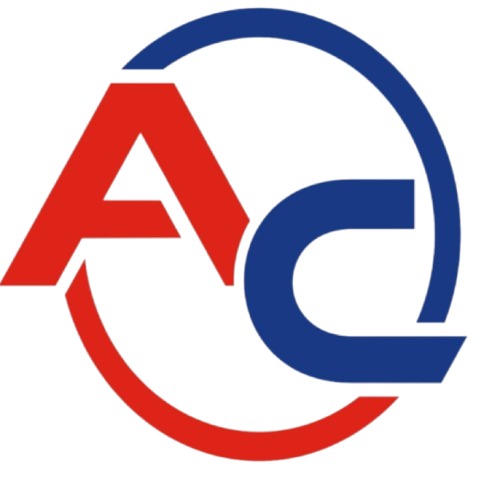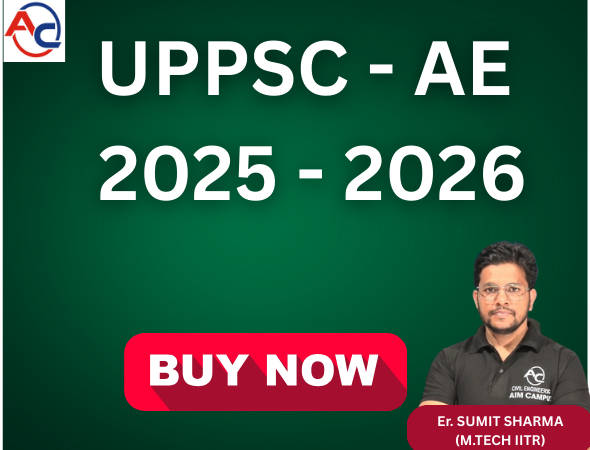UPPSC AE Syllabus for Prelims 2025
Paper 1 for UPPSC AE will consist of questions from General Knowledge, General Hindi and Engineering Aptitude. The topic-wise details of the syllabus for the prelims examination are mentioned below:
UPPSC AE Prelims Syllabus 2025 |
| Current Affairs
Indian History
Indian Geography
Indian Polity
General Science/Science in Everyday Life
Important Events |
| हिंदी भाषा का मूलभूत ज्ञान (स्वर, व्यंजन, रस)
प्रत्यय
समास
मुहावरे और लोकोक्तियाँ
अनेक शब्दों के लिए एक शब्द
उचित शब्द से दिए गए रिक्त स्थान की पूर्ती
पर्यायवाची शब्द, विलोम शब्द, शब्द युग्म, लिंग परिवर्तन, वचन परिवर्तन आदी
वर्ण, वर्तनी और उच्चारण
वाक्य–क्रम व्यवस्थापन
उपसर्ग और प्रत्यय
विपरीतार्थक शब्द
संधि तथा संधि–विच्छेद
अनेकार्थक शब्द
|
Engineering Aptitude
This section aims to evaluate the basic understanding of aspirants about engineering principles and basic concepts including the following topics:
1. General principles of design and drawing
2. Engineering materials
3. Basics of thermodynamics
4. Water resources and conservation processes
5. Basics of project management
6. Industrial safety and safety standards
7. Information and communication technologies (ICT)
8. Basics of artificial intelligence and robotics
9. Types of machinery maintenance
10. Green Energy
11. Basics of measurement & instrumentation
12. Energy conversion principles
13. Disaster management
14. Ethics and values in the engineering profession
15. Quality control
16. Intellectual property rights
17. Human health and sanitation
18. Handling & storage of products
19. Climate change
20. Production & construction
21. Recent developments in applied sciences
22. Role of Science & Technology in daily life
UPPSC AE Syllabus for Mains
The UPPSC AE Paper 2 will cover questions on General Studies and Concerned discipline subjects to assess the candidate’s professional knowledge:
UPPSC AE Mains Syllabus for Hindi
• हिंदी भाषा का मूलभूत ज्ञान (स्वर, व्यंजन, रस)
• प्रत्यय
• समास
• मुहावरे और लोकोक्तियाँ
• अनेक शब्दों के लिए एक शब्द
• उचित शब्द से दिए गए रिक्त स्थान की पूर्ती
• पर्यायवाची शब्द, विलोम शब्द, शब्द युग्म, लिंग परिवर्तन, वचन परिवर्तन आदी
• वर्ण, वर्तनी और उच्चारण
• वाक्य–क्रम व्यवस्थापन
• उपसर्ग और प्रत्यय
• विपरीतार्थक शब्द
• संधि तथा संधि–विच्छेद
• अनेकार्थक शब्द
UPPSC AE Paper II General Studies Syllabus
The General Knowledge will cover questions on Current Affairs, History, Polity, Geography, and other miscellaneous topics to analyze the general awareness of candidates. This section worth a weightage of 25 marks covers the following topics:
• Current Affairs
• Indian History
• Indian Geography
• Indian Polity
• General Science & Science in Everyday Life
• Important Events of National & International level
UPPSC AE Mains Syllabus for Civil Engineering
Part A
• Engineering Mechanics: Units and Dimensions, SI units, vectors, concept of force, Concept of particle and rigid body Concurrent, non-concurrent, and parallel forces in a plane, moment of force and varignon’stheorem, free body diagram, conditions of equilibrium Principle of virtual work, equivalent force system. First and second moments of area, Mass moment of inertia, Static Friction, inclined plane and bearings, kinematics and kinetics, kinematics in Cartesian and Polar Coordinates, motion under uniform and non-uniform acceleration, motion under gravity, Kinetics of particle: Momentum and Energy principles, D’Alembert’s principle, Collision of elastic bodies, rotation of rigid bodies, simple harmonic motion
• Strength of Materials: Simple Stress and Strain, Elastic constants, axially loaded compression members, Shear force and bending moment, theory of simple bending, bending stress, Shear Stress, Beams of uniform strength, Leaf springs, close-coiled helical springs, Strain Energy in direct stress, bending & shear. Deflection of beams; Macaulay’s method, Mohr’s Moment area method, Conjugate beam method, unit load method, Torsion of shafts, Transmission of power, Elastic stability of columns, Euler’s Rankin’s and Secant formulae. Principal stresses and strains in two dimensions, Mohr’s Circle, Theories of Elastic Failure, Thin and Thick cylinder, Stresses due to internal and external pressureLame’s equations.
• Structural Analysis: Castiglianios theorems I and II, Unit load method of consistent deformation applied to beams and pin-jointed trusses. Slope-deflection, moment distribution, Kani’s method of analysis and column Analogy method applied to indeterminate beams and rigid frames. Rolling loads and influence lines: Influence lines for reactions of beam, shear force and bending moment at a section of beam. Criteria for maximum shear force and bending moment in beams traversed by a system of moving loads, influence lines for simply supported plane pin jointed trusses, Arches: Three hinged, two hinged and fixed arches, rib shortening and temperature effects, influence lines in arches; Matrix methods of analysis: Force method and displacement method of analysis of indeterminate beams and rigid frames. Plastic Analysis of beams and frames: Theory of plastic bending, plastic analysis, statical method, Mechanism method. Unsymmetrical bending: Moment of inertia, product of inertia, position of neutral axis and principal axis, calculation of bending stresses.
• Structural Steel Design: Factors of safety and load factors, rivetted, bolted and welded joints and its connections, Design by working, stress/limit state method of tension and compression member, beams of built up section, riveted and welded plate girders, gantry girders, stanchions with battens and lacings, slab and gusseted column bases, Design of highway and railway bridges: Through and deck type plate girder, Warren girder, Pratt truss.
Part B
• Design of Concrete and Masonry Structures: Working Stress and Limit State Method of design as Recommendations of B.I.S. codes, design of one way and two way slabs, stairs-case slabs, simple and continuous beams of rectangular, T and L sections, compression members under direct load with or without eccentricity, isolated and combined footings, Cantilever and counterfort type retaining walls, Water tanks: Design requirements as per B.I.S. code for rectangular and circular tanks resting on ground, Prestressed concrete: Methods and systems of prestressing, anchorages, analysis and design of sections for flexure based on working stress, losses of prestress, Earthquake resistant design of building as per BIS code. Design of brick masonry as per I. S. Codes, Design of masonry retaining wall.
• Building Materials: Physical properties of construction materials concerning their use: stones, bricks, tiles, lime, glass, cement, mortars, Concrete, the concept of mix design, pozzolans, plasticisers, super plasticisers, Special concrete: roller compacted concrete, mass concrete, self-compacting concrete, Ferro cement, fibre reinforced concrete, high strength concrete, high-performance concrete, Timber: properties, defects and common preservation treatments, Use and selection of materials for various uses, e.g. Low-cost housing, mass housing, high rise buildings.
Working Stress and Limit State Method of design as Recommendations of B.I.S. codes, design of one way and two way slabs, stairs-case slabs, simple and continuous beams of rectangular, T and L sections, compression members under direct load with or without eccentricity, isolated and combined footings, Cantilever and counterfort type retaining walls, Water tanks: Design requirements as per B.I.S. code for rectangular and circular tanks resting on ground, Prestressed concrete: Methods and systems of prestressing, anchorages, analysis and design of sections for flexure based on working stress, losses of prestress, Earthquake resistant design of building as per BIS code. Design of brick masonry as per I. S. Codes, Design of masonry retaining wall.
• Building Materials: Physical properties of construction materials concerning their use: stones, bricks, tiles, lime, glass, cement, mortars, Concrete, the concept of mix design, pozzolans, plasticisers, super plasticisers, Special concrete: roller compacted concrete, mass concrete, self-compacting concrete, Ferro cement, fibre reinforced concrete, high strength concrete, high-performance concrete, Timber: properties, defects and common preservation treatments, Use and selection of materials for various uses, e.g. Low-cost housing, mass housing, high rise buildings.
Part C
• Constructions Technology, Planning and Management: Masonry constructions using brick, stone, construction detailing and strength characteristics paints, varnishes, plastics, waterproofing and damp proofing materials. Detailing of walls, floors, roofs, staircases, doors and windows. Plastering, pointing, flooring, roofing and construction features. Retrofitting buildings, Principle of planning for residents and specific uses, National Building code provisions and uses. Basic principles of detailed and approximate estimating, specifications, rate analysis, and real property valuation principles. Machinery for earthwork, concreting and their specific uses, factors affecting selection of construction equipment, operating cost of equipment. Construction activity, schedules, organisations, quality assurance principles. The basic principle of network CPM and PERT uses in construction monitoring, cost optimisation and resource allocation. Basic principles of economic analysis and methods. Project profitability: Basis principles of financial planning, simple toll fixation criterions.
Part D
• Geo Technical Engineering & Foundation Engineering: Types of soils, phase relationships, consistency limits particles size distribution, classifications of soils, structure and clay mineralogy. Capillary water, effective stress and pore water pressure, Darcy’s Law, factors affecting permeability, determination of permeability, and the permeability of stratified soil deposits. Seepage pressure, quick sand condition, compressibility and consolidation, Terzaghi’s theory of one-dimensional consolidation, and consolidation test. Compaction of soil, field control of compaction total stress and effective stress parameters, pore pressure parameters, shear strength of soils, Mohr Coulomb failure theory, shear tests. Earth pressure at rest, active and passive pressures, Rankin’s theory, Coulomb’s wedge theory, Graphical method of earth pressure on retaining wall, sheet pile walls, braced excavation, bearing capacity, Terzaghi and other important theories, net and gross bearing pressure. Immediate and consolidation settlement, stability of the slope, total stress and effective stress methods, conventional methods of slices, stability number. Subsurface exploration, methods of boring, sampling, penetration tests, pressure meter tests, essential features of foundation, types of foundation, design criteria, choice of type of foundation, stress distribution in soils, Boussinessq’s theory, Westergaard method, Newmarks chart, pressure bulb, contact, pressure, applicability of different bearing capacity theories, evaluation of bearing capacity from filed tests, allowable bearing capacity, settlement analysis, allowable settlement, proportioning of footing, isolated and combined footings, rafts, pile foundation, types of piles, plies capacity, static and dynamic analysis, design of pile groups, pile load test, settlement of piles lateral loads, foundation for bridges, Ground improvement techniques: sand drains, stone columns, grouting, soil stabilization geotextiles and geomembrane, Machine foundation: Natural frequency, design of machine foundations based on the recommendation of B.I.S. codes.

